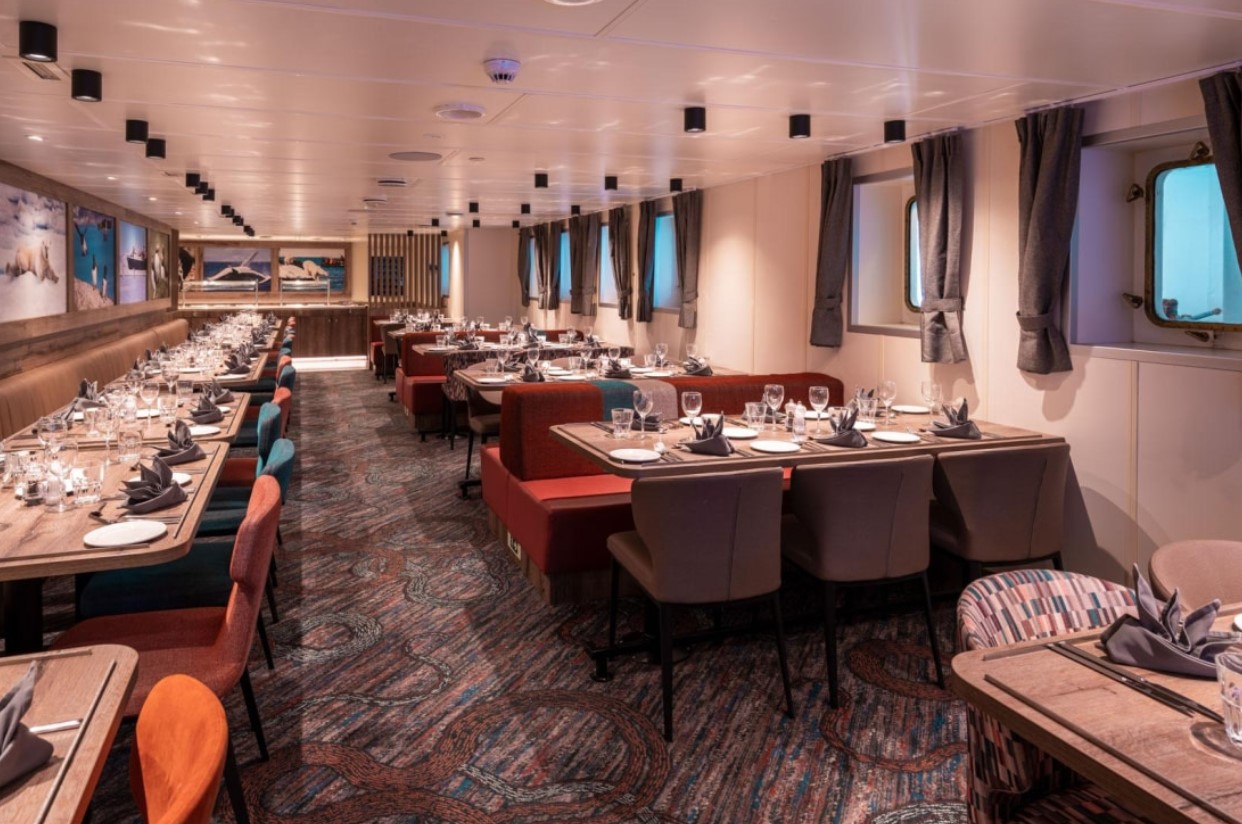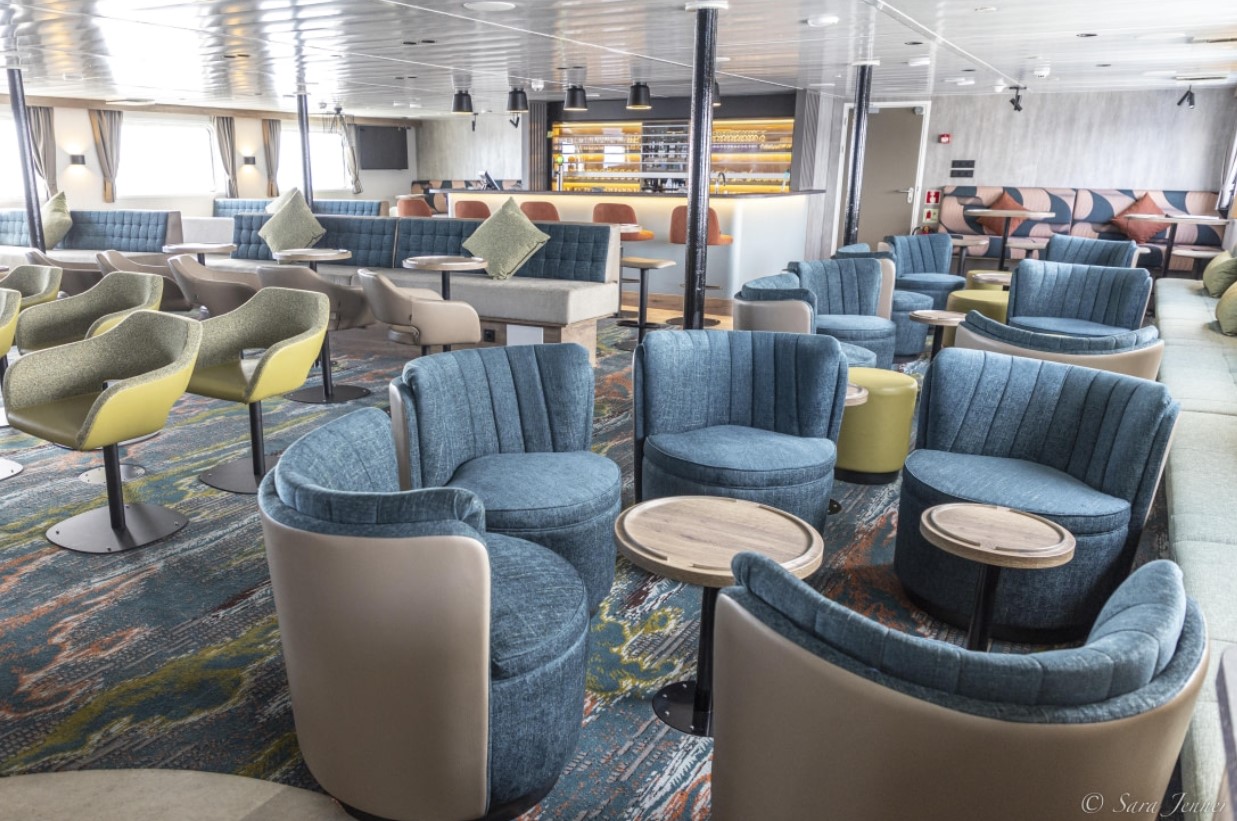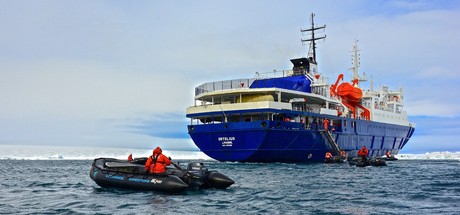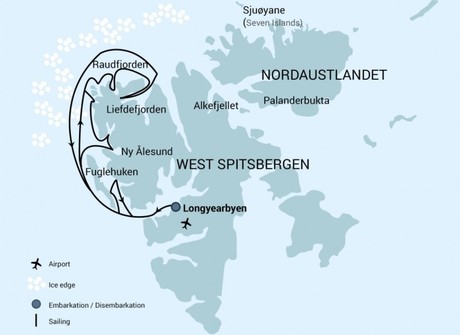North Spitsbergen, Basecamp, Free Kayaking, Hiking, Photo Workshop, Cleaning the Shores
The North Spitsbergen Basecamp cruise offers you a myriad of ways to explore and enjoy this Arctic Region. This expedition allows you to hike, snowshoe, kayak, and learn to take perfect pictures of the polar flora and fauna. Background on Basecamp cruises: - Our Basecamp voyages focus on land and near-shore activities with minimal disturbance to local wildlife. If time and conditions permit, the expedition team will also look for wildlife opportunities whenever possible. By definition, a basecamp is a temporary camp from which expeditions or other outdoor activities can be carried out. During our designated Basecamp cruises, the ship navigates to carefully chosen areas around North Spitsbergen, staying in fewer locations than during our regular trips so that it can serve as a comfortable hub for multiple outdoor activities. Hikers (H) can embark on vigorous walks in the backcountry, photographers (P) can capture the dramatic surroundings in pictures, and kayakers (K) can explore waterways through which the ship cannot always sail. Passengers who do not wish to engage in these activities can enjoy Zodiac excursions and easy-to-moderate shoreline walks that focus on wildlife. All activities are free of charge. Cleaning the shores of Spitsbergen: - Interested in doing something good for the enviroment? We welcome you to participate in our ongoing effort to remove plastic waste and other rubbish from the shores of Spitsbergen. Garbage from the ocean, such as fishing gear and plastic litter, piles up on these shores. This litter is hazardous to the animals, which get entangled in fish nets and sometimes ingest micro-plastics that can lead to starvation and suffocation. Supported by AECO and the governor of Spitsbergen, we enjoy cleaning the beaches of Svalbard with our passengers. All participants will be assisted by our guides and provided with collection bags. About 50 passengers will clean in the morning while the other 50 have their excursion in another area. Then in the afternoon, the groups switch roles. And if we cannot clean a certain area because of roaming bears or other concerns, we will find an alternate area.
You touch down in Longyearbyen, the administrative center of Spitsbergen, the largest island of the Svalbard archipelago. Enjoy strolling around this former mining town, whose parish church and Svalbard Museum make for fascinating attractions. Though the countryside appears stark, more than a hundred species of plant have been recorded in it. In the early evening the ship sails out of Isfjorden, where you might spot the first minke whale of your voyage.
On the first day of our activity program, we will slowly ease into things. Blomstrandhalvøya is located on the northern side of the fjord, which will offer shelter and room to change plan in case the weather changes. In the afternoon, you visit Ny Ålesund, one of the northernmost settlements on Earth. Once a mining village served by the world’s most northerly railway – you can still see its tracks – Ny Ålesund is now a research center. Close to the community is a breeding ground for barnacle geese, pink-footed geese, and Arctic terns. And if you’re interested in the history of Arctic exploration, visit the anchoring mast used by polar explorers Amundsen and Nobile in their airships, Norge (1926) and Italia (1928). In the evening, we head north along the west coast and spend the night in the sheltered surroundings of Krossfjorden.
Next to our activities, we will next head toward Amsterdamoya, where you have the chance to hike past the remains of a 17th-century whaling station. You can also enjoy the beautiful panorama of Smeerenburgsleta. In the afternoon, we make for the islands around Fair Haven.
At Raudfjorden, on the north coast of Spitsbergen, you can take in an expansive fjord spilling with glaciers – and maybe even visited by ringed and bearded seals. The cliffs and shoreline of this fjord also support thriving seabird colonies, rich vegetation, and the possibility of polar bears. Here we will find the right balance between safe activities and wildlilfe watching.
Depending on the weather, you could sail into Liefdefjorden and cruise within sight of the 5-kilometer-long (3.1 miles) face of Monaco Glacier. The waters in front of this glacier are a favorite feeding spot for thousands of kittiwakes, and the base of the ice is a popular polar bear hunting ground. If ice conditions prevent sailing here early in the season, we may use an alternate route along the west coast of Spitsbergen. Near the area of Texas Bar and Hornbaekpollen, there are also some great hikes.
This is our reserve day for activities around North Spitsbergen. Weather and wildlife permitting, we will choose the right location for another day of splendid outdoor adventures.
Forlandsundet, between the main island of Spitsbergen and the narrow Prins Karls Forland, is a place of great beauty and fascinating wildlife. Walruses sometimes haul out here, and seabirds can be found around Fuglehuken. You may also see walrus populations around Sarstangen and Poolepynten. Alternatively, we might sail into St. Johns Fjord or south to the mouth of Isfjorden, landing at Alkhornet. Seabirds nest on these cliffs, Arctic foxes search below for fallen eggs and chicks, and reindeer graze the sparse vegetation. We will arrive in Longyearbyen later that night.
Every adventure, no matter how grand, must eventually come to an end. You disembark in Longyearbyen, taking home memories that will accompany you wherever your next adventure lies.
All itineraries are for guidance only. Programs may vary depending on ice, weather, and wildlife conditions. Landings are subject to site availabilities, permissions, and environmental concerns per AECO regulations. Official sailing plans and landing slots are scheduled with AECO prior to the start of the season, but the expedition leader determines the final plan. Flexibility is paramount for expedition cruises. The average cruising speed of our vessel is 10.5 knots.
|
Book now |
Quadruple Porthole

Triple Porthole

Twin Porthole

Twin Window

Twin Deluxe

Superior

Vessel Type: Expediton
Length: 91m
Passenger Capacity: 108-123
Built / Refurbished : 1989 / 2015
Ortelius was originally the Marina Svetaeva. Built in Gdynia, Poland in 1989, it served as a special-purpose vessel for the Russian Academy of Science. Later it was re-flagged and renamed after the Dutch/Flemish cartographer Abraham Ortelius (1527 – 1598), who in 1570 published the first modern world atlas: Theatrum Orbis Terrarum or Theater of the World. At that time his atlas was the most expensive book ever printed. Ortelius is classed by Lloyd’s Register in London and flies the Dutch flag.
Perfect for Any Expedition
The vessel has the highest ice-class notation (UL1, equivalent to 1A) and is therefore suitable to navigate in solid one-year sea ice as well as loose multi-year pack ice. Ortelius can accommodate up to 108 passengers and has an abundance of open-deck spaces. It is manned by 24 highly experienced nautical crew members, 20 hotel staff, eight expedition specialists (one expedition leader, one assistant, and six lecturer-guides), and one doctor.
Ortelius: a Vessel with Comfort and Character
Please be aware that a small number of cabins may have a partially obstructed view due to the size of the windows and the design requirements of the ship. For example, some windows may be partly obstructed in the lower half by a gangway. The best view is always on the outer deck or the bridge. Though our voyages are primarily meant to offer our passengers an exploratory wildlife program with as much time ashore as possible, Ortelius offers all the comforts of a standard hotel ― along with a bar and lecture room. Flexibility assures maximum wildlife opportunities. As such, Ortelius carries 10 Zodiacs with 60hp Yamaha engines.
Age & Nationality
Passengers on a typical voyage range from in their 30s to their 80s, with the majority usually between 45 ― 65. Our expeditions attract independent travelers from around the globe who are characterized by a strong interest in exploring remote regions. The camaraderie that develops on board is an important part of the Oceanwide experience, and many passenger groups include several nationalities.
What to Wear
In keeping with the spirit of expedition, dress on board is informal. Bring casual and comfortable clothing for all activities, and keep in mind that much of the scenery can be appreciated from deck ― which can be slippery. Bring sturdy shoes with no-slip soles, and make sure your parka is never far away in case one of our crew shouts “Whales!” over the loudspeaker and you have to dash outside in a moment’s notice. Opt for layers, as it is comfortably warm aboard the ship though often cold on deck.
How to Pay
Refreshments and souvenirs will be charged to your cabin. The day before departure you can settle your bill with the hotel manager, paying by credit card (Visa or MasterCard) or cash (euro, or in some cases dollar). We cannot, however, accept checks. Though the prices and standard currency on board is in the euro, other currencies may be accepted at the discretion of the hotel manager, at prevailing rates.
Electric Current
The electrical supply aboard ship is 220v, 60Hz. Electrical outlets are standard European with two thick round pins, so some passengers may need a 220v/110v converter.
Gratuities
The customary gratuity to the ship’s service personnel is made as a blanket contribution at the end of the voyage and is divided among the crew. Tipping is a personal matter, and the amount you wish to give is at your sole discretion. As a generally accepted guideline, we suggest 8 ― 10 euros per passenger per day. It is better for the crew if you give cash.
Non-Smoking Policy
We have a non-smoking policy inside all our vessels, though you can smoke in certain designated areas. We ask that you please respect the wishes of non-smokers.
Your Physical Condition
You must be in good overall health and be able to walk several hours per day. The expedition is ship-based and physically not very demanding, but we spend as much time as possible on shore. You are, however, welcome to remain aboard the ship if you prefer. To join most excursions you must be able to get up and down the steep gangway ― from the ship to the water level ― to board the Zodiacs. Staff will assist you in and out of the boats, and boarding will become progressively easier with practice, but conditions on shore can be slippery and rocky. Remember, you will be traveling in remote areas without access to sophisticated medical facilities, so you must not join this expedition if you have a life-threatening condition or need daily medical treatment.









Inclusions
• Voyage in selected accommodation category
• All meals while on board the ship
• Coffee and Tea while on board
• All shore excursions and landings by zodiac as per the itinerary
• Lectures held on board by Expedition Team and naturalists
• Port Charges/Taxes
• Comprehensive Pre-departure materials
• Free internet (1.5 GB of free internet connectivity per day)
• Free use of rubber boots and snowshoes
Exclusions
• International and domestic airfares whether commercial or charter
• Pre and Post-voyage accommodation
• Passport and visa costs if applicable
• Travel insurance including medical evacuation cover
• Beverages not listed in inclusions
• Any items of a personal nature including any medical costs incurred on board
• Meals when not on board the ship
• Gratuities (Recommended USD$15 per passenger per day)
Highlights
• Photo Workshop• Snowshoeing
• Kayaking
• Basecamp
• Hiking
• Zodiac Cruising & Shore Program
• Cleaning up Svalbard
• Shore-Based Walking
• Arctic Fox
• Kittiwake
• Polar Bear
• Walrus
Our Associates Include














